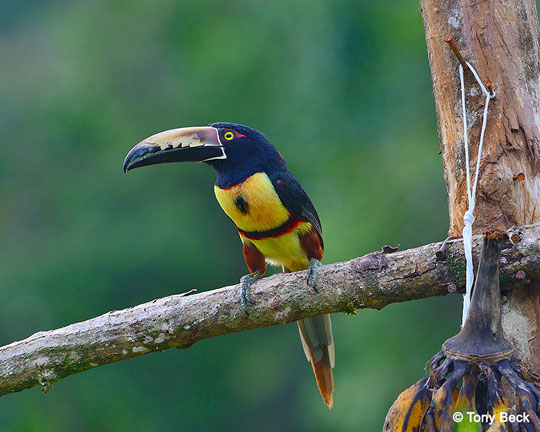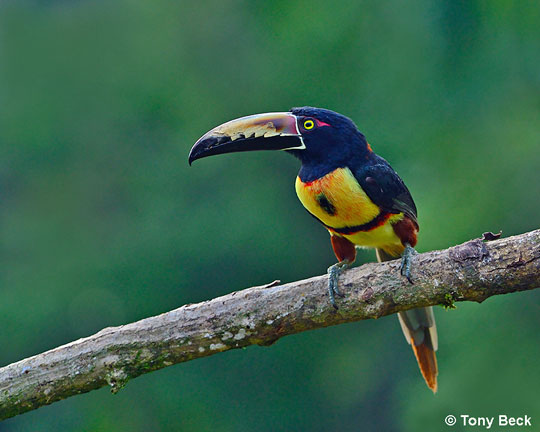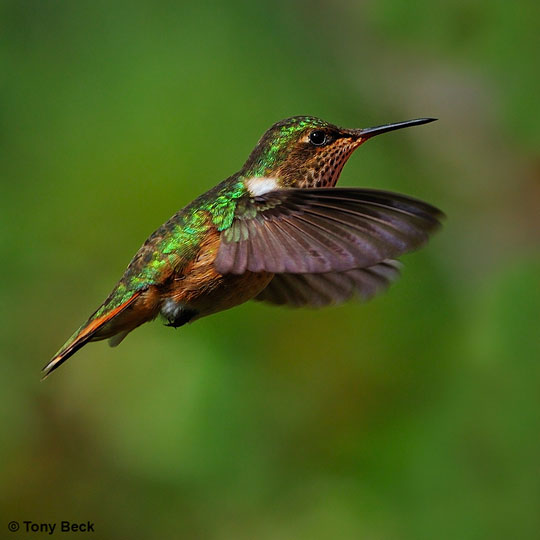But regardless of how easy it is to take a good photo nowadays, it’s still a challenge to achieve spectacular image quality on a consistent basis. The experience of seeing beautiful wildlife can be distracting and sometimes overwhelming, compelling us to just “take the shot” without due consideration to the effect we have the potential to realize. We need to invest some thought into what we’re trying to achieve if we want to maximize the impact of our photos. And as for any art form, knowledge and practice come into play. Here are a couple of tips that will help you make that leap from good photography to great art. I’ll leave the practice part up to you!
• Consider composition
Composition is simply studying what's in the viewfinder, and selecting the right moment to press the shutter. If we don't think about composition, our main subject often gets placed in the middle of the frame, as in this picture of a Collared Ararari in Costa Rica:

But, by placing the subject away from the centre, you have an image with greater appeal, as in the image below. Changing the camera angle also helped avoid unnecessary clutter in the frame, such as the distracting white string and bananas:

• Be familiar with your camera’s settings:
Relying on your camera’s default settings can lead to disappointment, especially when you have just one opportunity to capture a subject. For instance, if you want sharp images, especially of an active and unpredictable animal, you need to have selected a fast shutter speed to freeze the action (if possible, around 1/1000 of a second). This also helps to prevent problems caused by shaky camera movement. Check your camera's owner's manual to see which automatic features will help you achieve this. Many cameras have “action” or “sports” settings that automatically prioritize the selection of a fast shutter. They work very well with wildlife photography situations. Selecting a fast shutter speed will allow you to “freeze” the fast-beating wings of hummingbirds such as this Scintillant Hummingbird in Costa Rica:

Hopefully, you’ve found this helpful… If so, stay tuned for more tips!
*Tony will be co-leading our Patagonia Photo Tour this December. This will be a great opportunity to practice wildlife and scenery photography in great settings and under expert tutelage.



